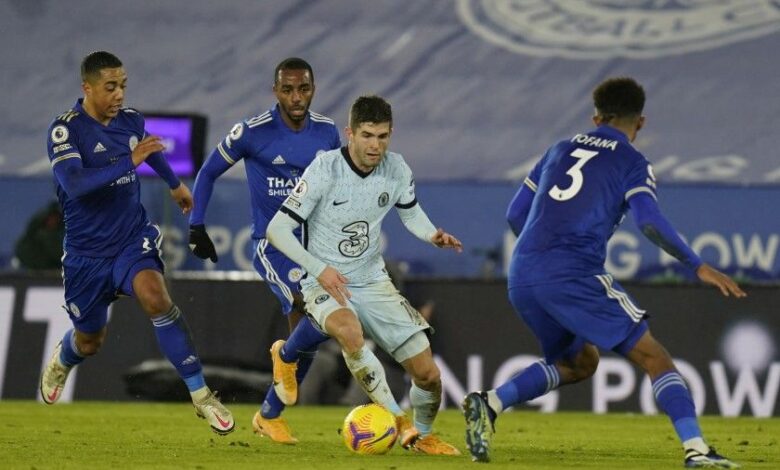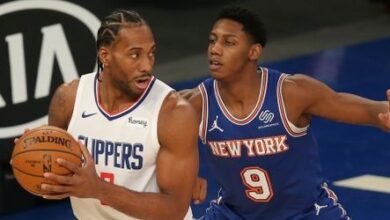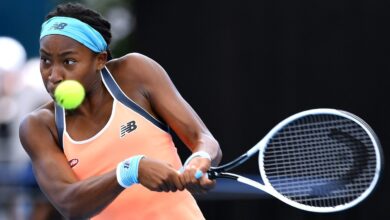USMNT looks to capitalize on more swagger honed in Europe

[ad_1]

No goalkeeper in U.S. soccer history played more games, won as often or started as many World Cup matches as Tim Howard, but he never played on a national team as good as the current one.
“This generation of players,” he said “is clearly the most talented group that this country has ever seen.”
Now all they have to do is prove it. This year, one of the busiest ever for a U.S. national team, will go a long way toward determining whether this golden generation is truly 24 carat or mostly fool’s gold.
There are eight World Cup qualifiers, the CONCACAF Gold Cup, two Nations League matches and the Tokyo Olympics on a 2021 schedule that opens Sunday with a friendly against Trinidad and Tobago in Orlando, Fla.
That exhibition figures to have little impact on what is otherwise shaping up as a decisive year for the national team. Trinidad, which eliminated the Americans from the last World Cup, hasn’t played in more than 14 months and the roster U.S. coach Gregg Berhalter will use for the game is a young, domestic one made up mostly of age-eligible candidates for this spring’s Olympic qualifiers, which is an under-23 tournament.
Just six players, among them Toronto’s Jozy Altidore and the Galaxy’s Sebastian Lletget, have made more than 13 senior international appearances.
The bulk of the first-choice U.S. roster, the one Berhalter will take into the World Cup qualifiers this fall, remains in Europe. The fact so many young Americans are playing regularly there is fueling optimism about the national team’s chances this year and beyond.
Even the obstinate José Mourinho likes what he sees.
“Lots of good players,” the Tottenham manager said in a talk before the United Soccer Coaches Convention earlier this month. “The players are coming and the players have quality. It’s not like everyone is a technical, creative player. It’s not like everyone is physical.
“There are quite a mixture of qualities. … You have the players to have a very interesting national team.”
It took a continental shift to make that happen.
In the last World Cup game the U.S. played, in 2014, six of the 11 starters came off North American teams. When Berhalter begins playing for keeps later this year, his roster will rely on regulars from more than a dozen European clubs. That will make a huge difference, says Nigel Reo-Coker, who became a keen observer of soccer on both sides of the Atlantic during a 16-year playing career split between the Premier League and MLS.
“It’s definitely going to benefit America as these guys get exposed to European football and learn about the different cultural approaches to the game,” Reo-Coker, 36, said by phone from South Florida as he shuttled his two young daughters home from school. “They’re playing with world-class players. Then it gets to the point of being actual students of the game and learning from the senior players who’ve been there, done that and seen it.”
For Reo-Coker, what happens on the field is only part of that education. The soccer culture in Europe is different and more unforgiving, he said, and it’s something U.S. players must experience to rise to the next level.
“Pressure makes diamonds,” he said, recalling the time he was met in the parking lot by angry West Ham fans, who pounded on the hood of his car angry over a loss.
“You don’t forget those situations,” he said. “The great crop of players that America has now, you need to get them to understand that to be the best in the world and to really do something with this golden generation, they have to deal with pressure, they have to understand and take criticism.”
Berhalter experienced that relentless approach to the game after leaving college a year early to begin a 15-year tour of Europe, where he played for six teams in three countries.
“There is something to be said for just being enveloped in soccer culture,” he said. “It’s all around you and you can’t escape it and that’s a positive. There certainly is the attention towards soccer, which helps drive the popularity, drives the pressure to compete and really perform.”
Reggie Cannon agrees. Less than five months ago he jumped from FC Dallas of MLS to Boavista in the Portuguese first division.
“It’s just a higher level in Europe.” said Cannon, who made the move shortly after his 22nd birthday. “It’s a different environment. The European lifestyle is so much different.”
For Bayern Munich’s Chris Richards, 20, one of more than a half-dozen U.S. national team players in Germany, that meant twice-weekly tutoring sessions with a language teacher. For 20-year-old Sergiño Dest, the first American to play for Barcelona, it meant a grilling from the media in Catalan, a language he doesn’t speak, after the team lost in his first two starts.
“I had to adapt to a lot of things,” said Richard Ledezma, who left Real Salt Lake’s USL affiliate to join Dutch team Jong PSV two years ago. “The football is different. The pace of the game is much faster. I’m still trying to take it all in.
“It’s a dream come true. I’m only 20 and to make that transition from America to Europe is not an easy thing to do, especially living on your own.”
Ledezma is one of 21 players called up by the national team in the last year who went to Europe as a teenager, a list that includes Chelsea’s Christian Pulisic, Dortmund’s Gio Reyna, Josh Sargent of Werder Bremen and Weston McKennie of Juventus. A willingness to get out of their comfort zone and test themselves against the best players in the world is another thing that separates this generation from past ones, Howard said.
“It’s difficult to go overseas at a young age because there’s so much that goes into it,” said Howard, who was 24 when he began his 13-year stay in the Premier League. “It’s not the fact that you don’t have enough talent or you’re not capable. It’s more like ‘are you worried about making it? Are you afraid to be by yourself and be away from mom and dad?’
“Those are real things that 16-, 17-year-olds have to face. This generation of players is more motivated than I’ve ever seen to just say ‘you know what? Don’t care. I’m going to be single-minded, focused and I want European glory and success.’”
Reo-Coker said there’s still one thing missing. He’d like to see the team show a bit more swagger, starting with the 22-year-old Pulisic, who made his national team debut and scored his first goal in Europe before he was old enough to vote.
“You can’t doubt his talent. But what I want to see is him playing for the national team and saying, ‘I’m the man.’ Having that slight bit of confidence and arrogance about him to say, ‘every time I get the ball I’m going to make something happen,’” Reo-Coker said.
“If you’re going to develop the next generation of football players and really be as dominant as a nation as you should, you have to do it how it’s been done time and time again and use the athleticism that you possess already.”
This story originally appeared in Los Angeles Times.
[ad_2]
Source link






